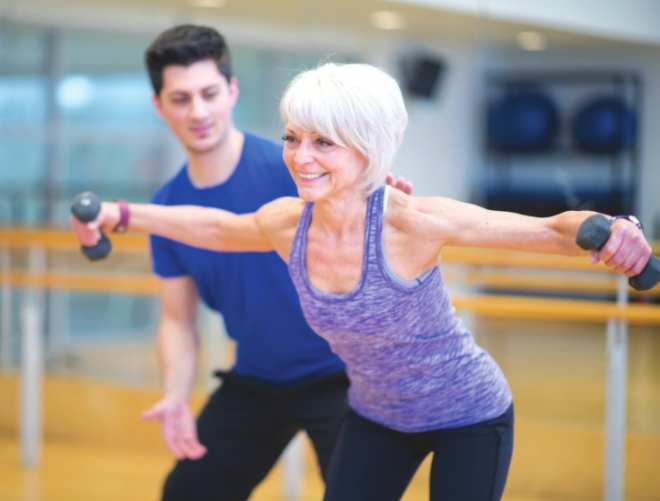OSTEOPOROSIS

Physical activity is a must to keep bones healthy
As the body gets older, it becomes more susceptible to conditions and diseases in which affect how we move and exercise.
It is estimated that one out of every two women over the age of 50 will experience breaking a bone due to osteoporosis, and 54 million Americans are either diagnosed with osteoporosis or have low bone mass, which puts them at a greater risk, according to the National Osteoporosis Foundation.
The disease causes bones to become weak and more prone to breaks and fractures, more commonly in the hip, spine and wrist, but other areas are at risk as well and can make taking care of one’s physical health more of a challenge. While exercise and physical activity are an important part of maintaining overall health, a diagnosis of osteoporosis can change how exercise is best performed. For many people, running is less of an exercise routine and more of a lifestyle. Osteoporosis can significantly impact a runner’s ability and may even put that individual at a higher risk of a broken bone or fracture. Because running and jogging is a high-impact and weight-bearing activity, precautions and a discussion with a healthcare provider are an important step in ensuring safety.
Individuals with healthy bones and no signs of low bone mass may benefit from running, as it helps bones to become stronger by stimulating the production of more bone cells. However, those with osteoporosis have a harder time tolerating that sort of pressure on their bones, and thus puts them at higher risk of causing damage. Additionally, it is more difficult for brittle bones to heal from the stress of running. In any scenario, the best route to take is to consult your primary care physician, as they have a more comprehensive history of health as to decide if running or jogging is a safe choice.Through that consultation it can be determined the level of fracture risk, and the variables to consider such as if a bone was broken or fractured in the recent past due to osteoporosis.
For people living with osteoporosis, exercising and staying active are an important part of managing the disease. The key components to a physically healthy body with osteoporosis is balance, flexibility, strength and posture. The NOF has suggestions and examples of various weight-bearing routines that can increase strength and well-being and each particular benefit. They note, however, that their suggestions should not replace any other exercises that have been recommended.
One of the biggest threats to those living with osteoporosis is falling, and while running and jogging have benefits that include better endurance and strength, they can also pose the risk of tripping or falling. The NOF lists several suggestions in preventing falls such as wearing shoes with rubber soles that promote solid footing and traction, avoiding slippery sidewalks or pavements by walking in the grass, being cognizant of curbs or changes in levels and even considering wearing hip pads or protectors for additional safety.
The spine is at significant risk for being fractured or broken when osteoporosis affects the body. It can be important to protect the spine in any exercise or physical activity that takes place. There are particular routines or movements that aid in strengthening the muscles around the spine that keep it straight and upright, though it is most crucial to note that those with osteoporosis should not flex or bend the spine forward. The NOF states that bending backward or leaning back helps to reduce the stress to the front of the spine.
Because running and jogging is a highimpact and weight-bearing activity, precautions and a discussion with a healthcare provider are an important step in ensuring safety.”Because weight-bearing activity and strength building are important to keep the bones strong and healthy, running or jogging is not necessarily out of the question. Ultimately, it will be up to the individual and his or her healthcare provider to determine what is in the best interest and safest. Should it no longer be an option, there are a multitude of other physical activities that have been proven safe and effective for keeping the body strong.
MORE EXERCISES:For a full list of exercise routines and more information about living with osteoporosis, go to www.nof.org.
